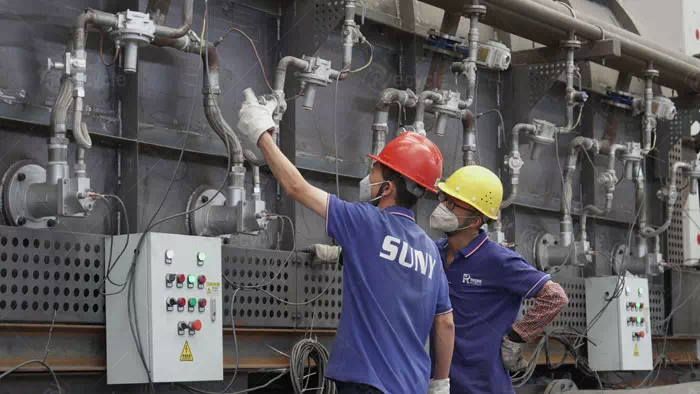News
Separation Recycling Line of Lithium Batteries
Time:2024-12-03 15:16:31
Lithium batteries contain a large number of hazardous substances and recyclable precious metals, such as lithium, cobalt, and nickel. If these used batteries are not reasonably recycled, they may cause serious pollution to the environment and waste valuable resources at the same time. Therefore, lithium battery recycling not only helps to reduce environmental pollution but also effectively recovers valuable materials and contributes to sustainable development.
Lithium battery recycling sorting line is an indispensable key piece of equipment in the recycling process. It efficiently separates metals, plastics, paper packaging, and other materials from waste lithium batteries through crushing, screening, sorting, and other technical means. Common recycling equipment includes a vibrating screen, airflow sorter, magnetic separator, and so on.
Separation Recycling Line of Lithium Batteries
Vibrating screen
Vibrating screen uses vibration to sort the battery waste according to the size of material particles. Larger metals, plastic shells, and other materials are screened out, and smaller particles go to the next stage of processing.
Airflow Sorting Machine
Airflow sorting machines utilise the difference in airflow speeds to separate materials of different densities. The lighter plastic and paper packaging floats away with the airflow, while the heavier metal material settles down into the collector.
Magnetic Separator
For waste batteries containing ferromagnetic components, the magnetic separator separates iron, steel, and other metals by magnetic force to improve the efficiency of metal recovery.
Operating Principle
The working principle of this sorting equipment depends on the physical characteristics of the material, such as particle size, density, and magnetic properties. Vibrating screens separate materials with different particles through vibration; airflow sorters achieve separation of light and heavy materials through airflow adjustment; and magnetic separators use magnetic force to adsorb ferromagnetic materials from waste materials. These equipment ensure that the various materials in lithium batteries can be recovered efficiently and accurately through multi-stage processing.
Technological Innovation
With the continuous progress of lithium battery recycling technology, the level of intelligence and automation of sorting equipment is increasing. For example, sorting systems using AI technology can accurately identify different types of lithium batteries and materials, further improving recycling efficiency. In addition, the application of visual recognition and sensor technology makes the whole recycling process more accurate, reduces manual intervention, and improves production stability.
In terms of the optimization of airflow sorting and vibrating screens, the new equipment not only improves the accuracy of sorting but also handles a larger scale of waste batteries, enhancing the overall processing capacity. The introduction of an intelligent control system makes the operation of the equipment more convenient, and the management efficiency is greatly improved.
The lithium battery recycling industry has a broad development prospect. With the continuous innovation of technology, recycling efficiency, and accuracy will be further improved, and it will be able to deal with larger-scale waste batteries, making a greater contribution to the reuse of resources and environmental protection. In the future, lithium battery sorting and recycling equipment will be more intelligent and automated and will be applied to a wider range of scenarios to promote a green economy and sustainable development.
LATEST NEWS
CONTACT US
Tel: 0086-13674945231(whatsapp)
Email: sunymachine@gmail.com
Add: Henan Communication Industrial Park) 5th St., Economic-Technological Development Zone, Zhengzhou
